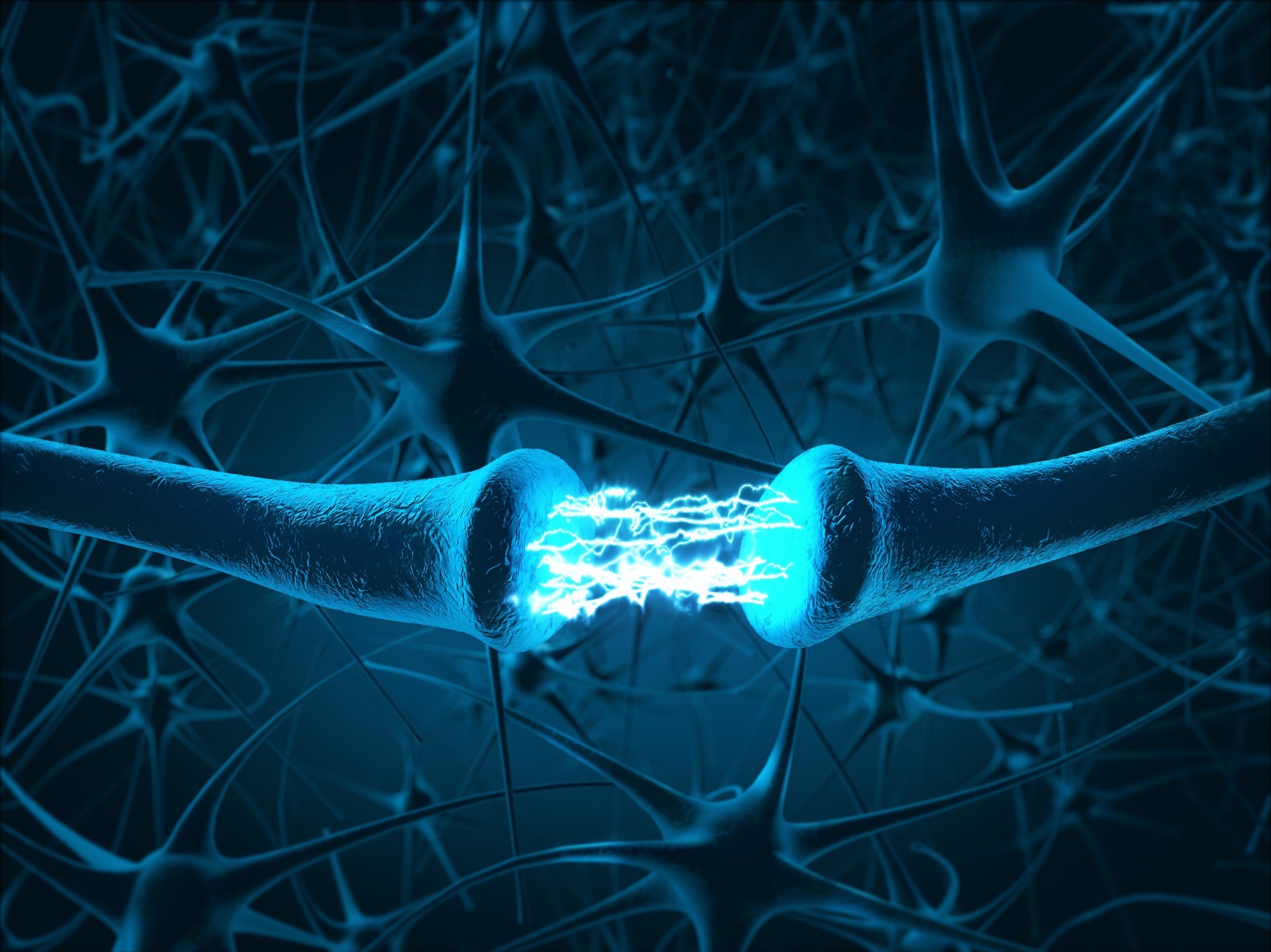Studies have reported that the human brain is highly susceptible to severe acute respiratory syndrome coronavirus 2 (SARS-CoV-2)-associated pathological changes. In addition, pre-existing AD has been established to increase the risk of fatal COVID-19, and conversely, COVID-19 has been linked to enhanced unmasked AD incidence rates. However, the molecular mechanisms of AD amplification by SARS-CoV-2 have not been understood completely.
 Study: The amplification of CNS damage in Alzheimer's disease due to SARS-CoV2 infection. Image Credit: jm13129 / Shutterstock
Study: The amplification of CNS damage in Alzheimer's disease due to SARS-CoV2 infection. Image Credit: jm13129 / Shutterstock
About the study
In the present study, researchers analyzed molecular alterations in samples of autopsied cranial tissues of five individuals with dementia history and SARS-CoV-2 infection-associated deaths, in comparison to those of eight individuals with COVID-19-associated deaths lacking dementia history, ten individuals diagnosed with AD in the pre-pandemic period between 2015 and 2018 and ten aged-matched control individuals (death before 2016 and no dementia history).
The study participants were aged between 50 years and 92 years, and most of them (n=7) were men. Samples were obtained from the frontal cortex, hippocampus, or brainstem/midbrain regions of the brain and subjected to immunohistochemistry (IHC) analysis to determine titers of antibodies (Abs) against the SARS-CoV-2 spike (S) protein subunits 1 (S1) and 2 (S2), nucleocapsid (N) protein, furin, angiotensin-converting enzyme (ACE2) and hyperphosphorylated tau (T) protein.
In addition, Abs against β-amyloid 42, α-synuclein, caspase-3, interleukin 6 (IL-6), tumor necrosis factor-alpha (TNF-α), basic leucine zipper transcription factor 1 (BACH-1), SH2-containing inositol phosphatase 1 (SHIP-1), major facilitator superfamily domain-containing protein 2 (MFSD2A), NMDA receptor 2 (NMDAR2), cluster of differentiation (CD)-3, 11b, 20, 31, 41, 163, and 206, transmembrane protein 119 (TMEM-119) and monocyte chemoattractant protein-1 (MCP-1) were used.
In situ hybridization was performed for SARS-CoV-2 ribonucleic acid (RNA) detection. HBEC (human cerebral microvascular endothelial cell line) and THP-1 (human monocytic cell line) cells were used for the in vitro cell culture experiments, and protein co-expression analyses were performed. Out of the five SARS-CoV-2-positive individuals with dementia, one and four were diagnosed with LBD (Lewy body dementia) and AD, respectively, and only the LBD patient was obese. There were eight severe COVID-19 cases without dementia history, seven of whom were obese, and six of them had diabetes type 2 (T2D).
Results
IHC analyses for β-amyloid-42, T protein, and α-synuclein confirmed AD and LBD diagnoses among SARS-CoV-2-positive individuals. In addition, brain samples of individuals with COVID-19-associated deaths without dementia history exhibited diffuse microangiopathy (MAP) and S1 protein and S2 protein endocytosis by CD31+ endothelial cells with strong caspase-3, ACE2, IL-6, complement component 6 and TNF-α co-localization unrelated to SARS-CoV2 RNA levels.
Out of 13 COVID-19 samples, SARS-CoV-2 RNA was detected in only two samples. Activation of microglia indicated by elevated MCP-1 and TMEM-119 expression in alignment with the endocytosed SARS-CoV-2 S. SARS-CoV-2-infected tissues of individuals without dementia displayed five-fold to 10-fold greater neuronal NMDAR2 and nitric oxide synthase (NOS) expression and remarkably lower (greater than 50%) expression of MFSD2a, SHIP-1, B-cell lymphoma (BCL)-6, -10, and BACH-1 proteins, the loss of which has been linked to AD worsening.
In SARS-CoV-2-infected tissues of demented individuals, widespread microencephalitis induced by the S protein with simultaneous activation of microglial cells coexisted in regions where the neuronal cells had hyperphosphorylated T protein. The findings indicated that neurons with pre-existing dysfunction were stressed additionally due to MAP induced by SARS-CoV-2. Treating ACE2-expressing endothelial brain cells with S1 in high doses (not equivalent to vaccines) showed similar molecular alterations observed among SARS-CoV-2-infected tissues and SARS-CoV-2-infected and AD brain tissues in vivo.
Microencephalitis in SARS-CoV-2-infected tissues was MAP-based and marked by degeneration of endothelial cells, microthrombi, and perivascular edema with immunological responses seated primarily in the reactive endogenous microglia. Microthrombi were observed in the SARS-CoV-2-infected tissues only, with density equivalent for SARS-CoV-2-positive non-dementia cases and COVID-19/AD individuals of 5.3+ microvessels (MV) per cm2 [standard electron microscopy (SEM) 1.5].
The microthrombi were CD41-positive indicative of platelet aggregation. The LBD/COVID-19 displayed 4.9+ MV per cm2 at SEM 0.8 with microthrombi. Among SARS-CoV-2 infection non-dementia cases and AD/SARS-CoV-2 infection cases, microvascular damage was observed in 13 MV per cm2 at SEM 2.0 and 14 MV per cm2 at SEM 1.8, respectively. The LBD case displayed 11 MV per cm2 at SEM 1.4 with microvascular injury.
The density of TMEM119+ processes increased by four to six-fold, in relation to controls, in the SARS-CoV-2-infected brain tissues with equivalent results for the COVID-19/AD tissues. Among COVID-19 non-dementia cases with a history of T2D and obesity, the ACE2 expression was significantly greater (76%) compared to non-obese COVID-19/AD cases (23%). The average proportions of MV with ≥1 cell with positive Caspase-3, IL-6, TNF-α, or complement component 6 staining were 22 in the SARS-CoV-2 infection and non-dementia cases and 24 in the SARS-CoV-2 infection and AD cases.
The study findings showed that severe SARS-CoV-2 infections induce widespread microencephalitis with microglial cell activation in human cranial tissues through SARS-CoV-2 S protein endocytosis that leads to dementia amplification by modulating AD-worsening protein expression and elevating the stress on dysfunctional neuronal cells. In addition, SARS-CoV-2 creates an acute hypercoagulable/hypoxic/proinflammatory microenvironment at sites with an abundance of βA-42 and hyperphosphorylated T protein.